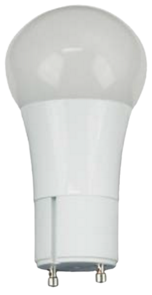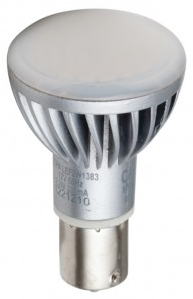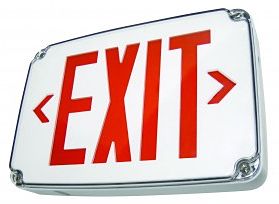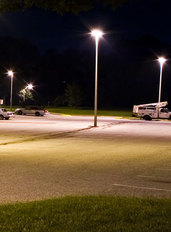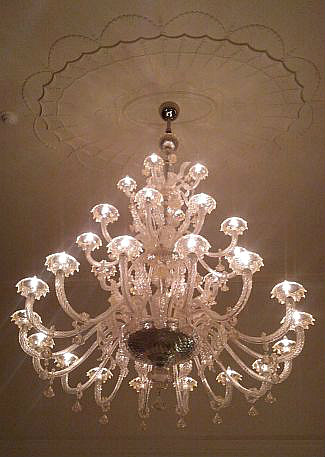 When it comes to hotels, there's no easy way to talk about lighting because there's such a variety of needs. On the one hand, hotels can choose from an incredibly wide selection of fixtures, from bedside table lamps to bedside lights embedded in the wall; from close to ceiling fixtures or lighting pendants in guest rooms and hallways to wall sconces to chandeliers, like the one pictured here in the lobby of a local luxury hotel. Then you have the many needs for that lighting: bright and usually white (higher color temperature) lighting in meeting rooms; warmer color temperatures often at lower lighting levels in guest rooms; mood lighting in restaurants; security lighting outdoors; etc. One thing all of these lights have in common is the use of energy to power them. And given how many lights are used in a hotel, and how long many of them are on every day, the move to LED technology is an important one. It can drastically reduce both energy and labor costs, as well as the repeated cost of buying bulbs. At Lighting Supply, we focus on replacement lighting for industrial and commercial enterprises like hotels. So while we don't carry fancy fixtures for design purposes, we do carry bulbs, ballasts, and functional fixtures like fluorescent troffers, LED ceiling panels, outdoor wallpacks and spotlights, and more. In this blog, we'll briefly discuss the benefits of LED lighting, then talk about several different hotel settings and the lights that serve them well. Why LED Lighting for Hotels?
For a more detailed look at the benefits of LED lights, you can explore our article: 14 Reasons It's Time to Switch to LED Lighting. Hotel General Lighting and LEDsFrom lobbies to hallways to meeting rooms, business centers, and offices, general hotel lighting is often addressed by recessed lighting and fluorescent troffers / light panels. Let's take a look at both:  Horizontal Style Plug-in LED Horizontal Style Plug-in LED RECESSED LIGHTING You're probably familiar with recessed cans from household or office settings, commonly with bulbs that have a BR shape for general lighting. In some settings where a specific area needs to be lighted, PAR lights may be used. These downlights normally use 65 to 75 watts if they're incandescent lights, though in higher ceilings, bulbs with higher wattages are used. Halogen bulbs cut the wattage down a bit, and many hotels have cut wattage down even more by installing fluorescent BR lamps. But today, the most efficient choice for recessed lighting is LED. There is another option to know about however, and that is an LED downlight retrofit kit. Rather than replacing an old BR bulb with an LED bulb, you remove the old bulb as well as the old trim. You then screw the base of the kit into the socket and slide the entire kit into the hole in the ceiling, using the kit's springs to lock it into the original can. This leaves you with a flush look against the ceiling and efficient LED technology to light the room. This is a wonderful option for aesthetics. Finally, many hotels opt for plug-in CFLs in cans rather than BR style bulbs. In some cases, two are used horizontally in a single can, producing a great deal of light at an energy cost far lower than a high-powered incandescent lamp. Once more, though, LED has an answer. Plug-in LEDs can now replace those CFLs, driving energy and replacement costs down even further. 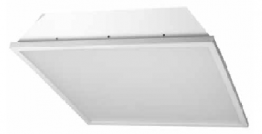 TROFFERS / LIGHT PANELS 2x4 fluorescent troffers are a common sight in hotels, lighting lobbies, hallways, and common areas like breakfast rooms. These remain a popular option because fluorescent lamps are cheap enough up front, compared to LED tubes, that the LED payoff may happen more slowly than when replacing other fluorescent lamps (like BR bulbs). Still, LED tubes that replace fluorescent tubes continue becoming more affordable and the payoff period is becoming shorter all the time. Couple that with the other benefits of LED compared to fluorescent lights and you'll understand why more and more businesses -- hotels included -- are making the switch. But replacing fluorescent tubes with LED tubes isn't your only option. These are ways to retrofit your current fluorescent fixture with an LED kit; or you can remove your old fixture and fully replace it with an LED lighting panel. These options are more fully explained in this blog.
Hotel Elevator Lighting and LEDs
Hotel Exit Sign LightingOutside of Jean-Paul Sartre's play, "No Exit," most hotels we know of do have exits and therefore exit signs. And every one of those needs to be lit up. Exit signs are, of course, lit 24 hours a day; traditional signs with incandescent bulbs running between about 24 to 40 watts could then chew through $24 to $40 in annual energy costs at .15 per kWh, while a sign retrofitted with LED bulbs might cost only $3 to operate. Since the only function of LED in this case is to light up the letters of a sign (no need to consider beam spread, color temperature, CRI, etc.), there's truly no reason not to upgrade incandescent exit sign bulbs to LED exit sign bulbs, since they will pay for themselves in a matter of months and last for many years. In new construction settings, of course, you can bypass LED upgrades in directly install LED exit signs like the one shown here. Hotel Restaurant Lighting and LEDsMany hotels have restaurants, and lighting can set the atmosphere through color temperature, brightness, and overall positioning. Casual restaurants may have brighter and whiter lights while high-end, more formal restaurants use warmer color temperatures and dimmer lights. That said, some restaurants struggle to balance mood with practical reading levels for menus. General recommendations suggest anywhere from 5 to 20 footcandles of light at table level for dining; but those same recommendations suggest a minimum of 20 footcandles for comfortable reading. Because of this, restaurants wanting to keep lower lighting levels for ambiance may wish to use larger print in their menus or offer some other solution, especially for an older clientele. Once again there's a strong reason to upgrade restaurant lighting to LEDs because of their range of color temperatures, brightness, ability to dim, and overall cost effectiveness. With more smart LED lighting options becoming available, it would even be possible for restaurants to control light levels at individual tables, perhaps providing more lighting until ordering has taken place, then dimming the lights for mood. Hotel Outdoor Lighting and LEDs
It's not so long ago that LED technology was expensive in the world of lighting. And while it's still more of an upfront cost than other forms of lighting, it's reached the point where it's typically a short payback period, and represents a fantastic way for hotels and other businesses to save on energy, maintenance, and the regular purchase of light bulbs.
1 Comment
|
This blog's content is copyright © 2014-19 Lighting Supply.

